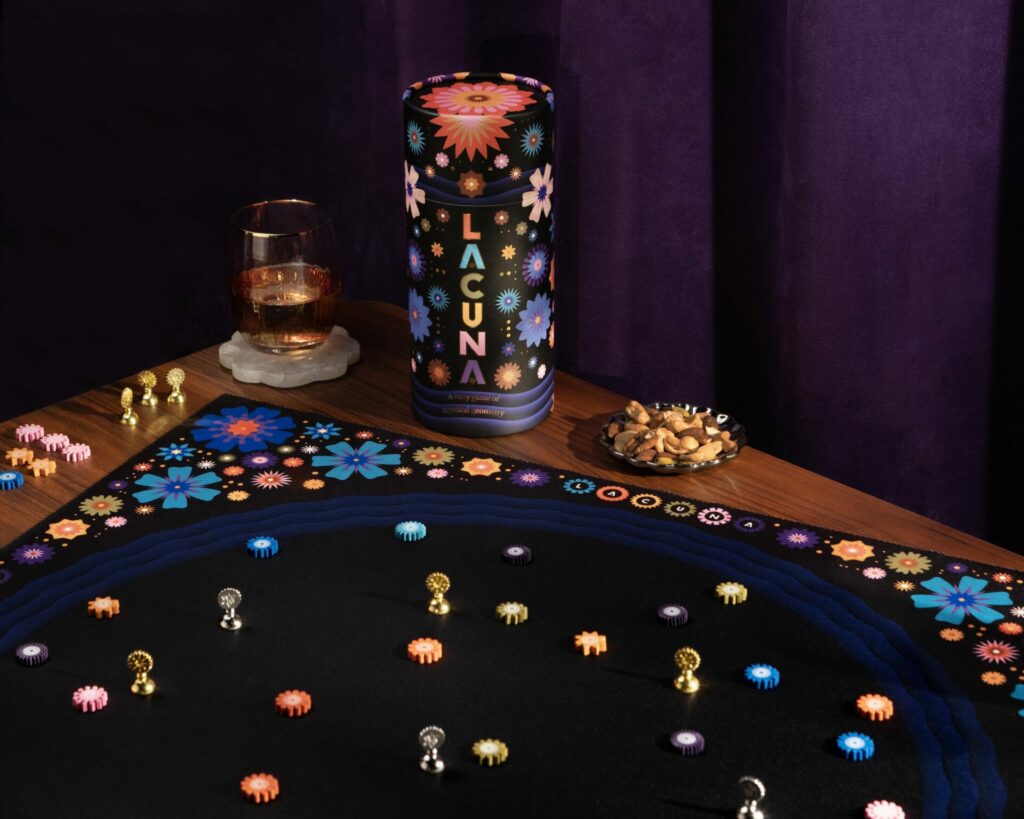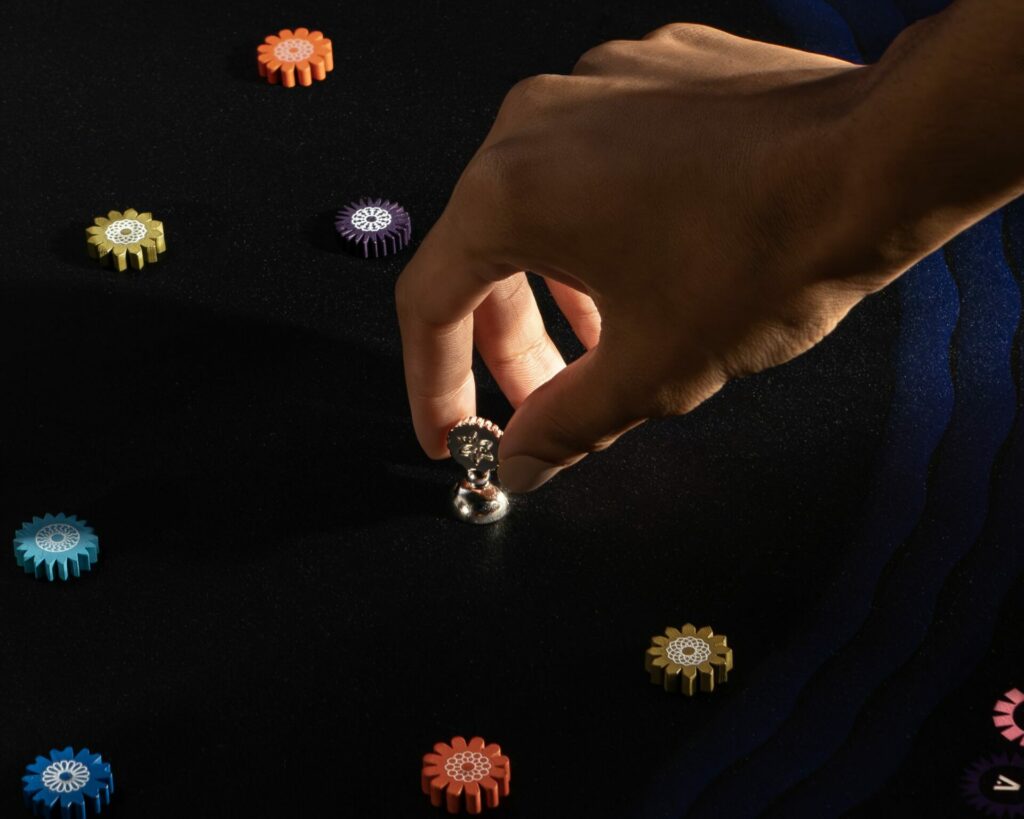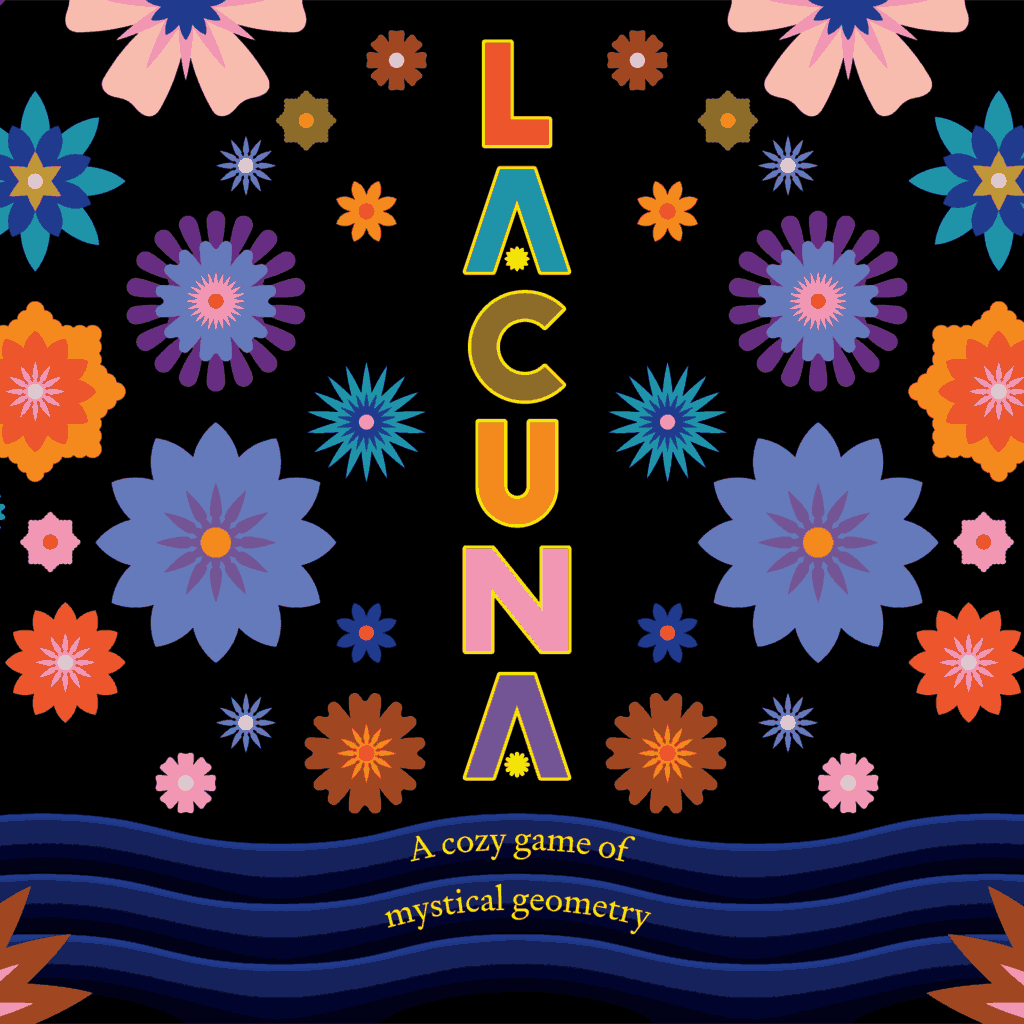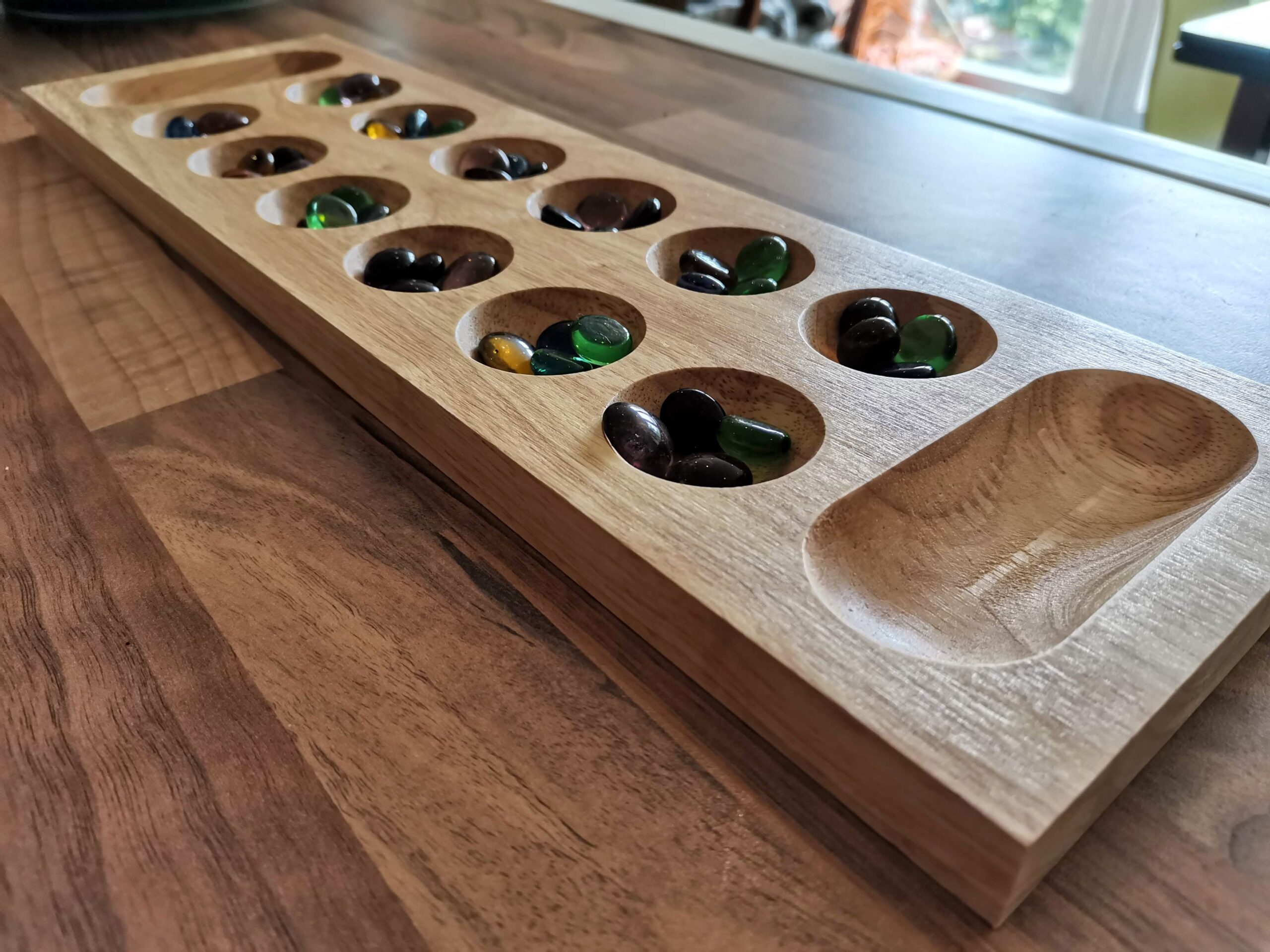Lacuna Review

Sometimes a concept is so simple, you wonder why it hasn’t been done before. Or maybe it has, but it never gained enough traction for it to end up under your nose. Lacuna falls firmly into this category. It’s a beautiful two-player game that takes less than ten minutes to play and is so simple you wonder why you haven’t played it before, while simultaneously making you wish you had.
Those of you who don’t like reading too much will be pleased to know this is going to be a short review, but one which carries as much opinion as ever.
Flower power
Lacuna comes in a cardboard tube. A bit like a big tube of Pringles, but with far fewer calories. I mean, probably, I’ve not studied the nutritional values of wooden flowers, of which there are loads. Flowers are in groups of colours (with different shapes and patterns too, colour-blind players) and at the start of the game they’re sprinkled from the tube on the included cloth. The aim is to spread them across the whole area, and it’s an action not akin to shaking salt on an icy driveway, or fish and chips. It’s an innately enjoyable thing to do, and while it feels like it’s prone to flowers bouncing off the table, never to be seen again, the publishers thankfully saw fit to include some spares. Hurrah!

The game from there is dead easy. Take one of your metal pawns (which feel weighty and gloriously tactile) and put it somewhere between two matching flowers. The only rule is there can’t be anything else along that imaginary line, be it another flower or another player piece. You then pick up the two flowers you intersected and add them to your pile of claimed flowers.
Play continues over the next few minutes until both players have placed all of their pawns. Then we get to the fun bit. The meaty bit. The bit which really makes Lacuna sing and makes you want to say “Okay, okay, I get it now, let’s set it up again and play another.”
Proximal approximations
After all the pawns are out on the cloth playfield and the initial flowers are in neat little stacks beside each player (or a jumbled mess – which type are you?) you both work your way through all the remaining flowers on the table and decide who has one of their pieces closest to it. That person claims the flower and adds it to their collection. As you might guess, sometimes it’s a very close-run thing, which is why there’s a ruler included in the tube. Despite the measuring device being given to you, you’ll still have the occasional disagreement, but that’s okay.
Once every flower has been considered and claimed, the winner is the person who has the majority of the flowers in each colour is considered to have won that colour. The person who wins the most colours wins the game. That’s all there is to the game. Place six pawns each, pick up the flowers and see who won.

Despite the simple gameplay there’s a wonderful, nuanced level of depth to Lacuna. Not to the levels of something like Chess or Go, but enough to make you come back time and again. There’s a surprising amount of strategy involved. Take the act of placing a pawn for example. It can go anywhere along the imaginary line between two flowers to claim them, so you might put your pawn right at the very end, knowing that it sets you up nicely to claim a cluster of nearby flowers at the end of the game, for being the closest.
Wouldn’t you just know it though, your opponent does everything in their power to claim that little posie you had your eye on, so by the end of the game you’re left with a scant single daisy, instead of the bouquet you had your heart set on. You’ll also start noticing what colours the other player has claimed. Once they claim four of one (there are six flowers per colour) type, there’s no point in claiming that colour any more, because you can never win it. Set your sights elsewhere instead and see if you can make it work for you. Simple concepts you can explain to anyone, but ones which feel clever when you employ them.
Final thoughts
Like I said at the outset, this was never going to be a long review. It’s a quick, easy, wonderfully accessible game suitable for just about anyone. What Lacuna does so well is to build on its novelty factors to transform it from just another two-player abstract game, to something that you’ll return to again and again. There are so many clever design concepts used to make sure that’s the case.
The cylindrical ‘box’ means it’s never going to get lost in a sea of rectangles on your shelf. The cloth playmat can just be scrunched-up and stuffed back inside afterwards. Sprinkling the flowers from the tube to perform game setup is enjoyable. The metal pawns are hefty and fun just to hold. All these little things combine to make a game whose whole is greater than the sum of its parts. If it was the same game but used cardboard chits on a board, it would still have been enjoyable, but nowhere near as joyful to play, and that’s an unusual idea for me to wrap my head around.
Lacuna is a hit with my family and with anyone I’ve ever introduced to it. Will it be the main course of your games night? Probably not. Will it be the quick filler you return to again and again, or the post-Christmas dinner fuel for family interaction on the dining table? Absolutely. Lacuna is a joyful, simple, beautiful game which I’d argue deserves a spot in anybody’s collection for the £20 it’ll cost you.
Review copy kindly provided by CMYK. Thoughts and opinions are my own.

Lacuna (2023)
Design: Mark Gerrits
Publisher: CMYK
Art: Nick Liefhebber
Players: 2
Playing time: 10 mins













